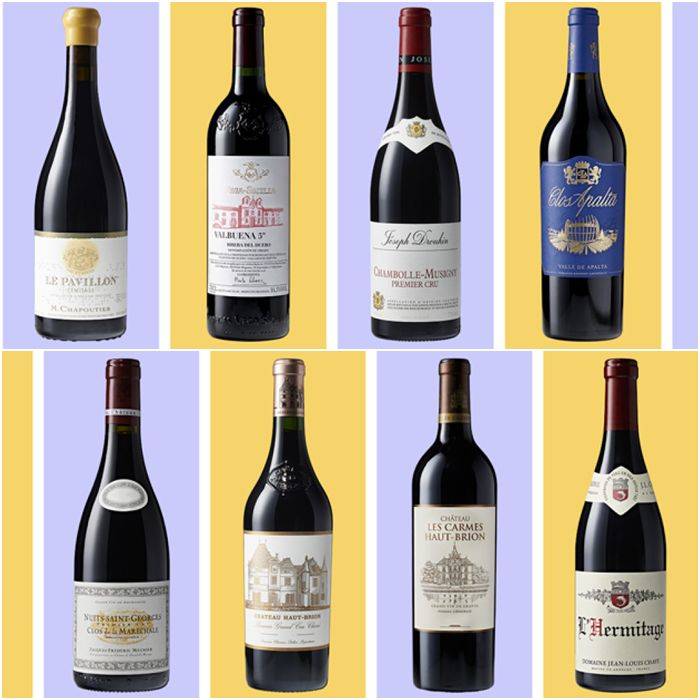Fine wine market in 2025 sees selective growth as Rhône, Burgundy, and global labels outperform broader trends
Rising prices for top wines highlight regional strength and diversification opportunities despite overall cautious investor sentiment
2025-08-28

The fine wine market in 2025 has presented a complex picture, with headline figures suggesting softer overall conditions but certain wines showing remarkable growth. Data from more than 15,000 trades recorded this year by Wine Investment reveals that while the broader market may be subdued, select labels are delivering significant returns. These wines have outperformed their 2024 average trading prices, highlighting areas of strength in an otherwise cautious environment.
Leading the pack is M. Chapoutier’s Ermitage Le Pavillon 2008 from the Rhône Valley in France. This wine has seen its average price rise by nearly 40% year-on-year, moving from £917 to £1,271 per bottle. The strong performance of this Hermitage wine suggests that collectors are increasingly recognizing the value and potential of top Rhône producers, a region often considered undervalued compared to Burgundy.
Spain’s Vega Sicilia Valbuena 5° 2016 follows closely, with a 29% increase in average price, now surpassing £1,700 per bottle. Despite a slight dip in trading volumes, the consistent price rise underlines Vega Sicilia’s status as one of Spain’s few globally recognized fine wine estates.
Burgundy remains central to the fine wine conversation. Joseph Drouhin’s Chambolle-Musigny Premier Cru 2017 has climbed over 28% in value, even as trading volumes dropped significantly. This pattern points to scarcity as a key driver of price increases for sought-after Burgundy labels. Another Burgundy standout is Jacques-Frédéric Mugnier’s Clos de la Maréchale 2009 from Nuits-Saint-Georges, which posted a 23% gain to reach an average price of £2,602 per bottle. Here too, reduced trading activity suggests tightening supply.
Chile’s Clos Apalta 2016 has emerged as a notable performer outside the traditional European powerhouses. Its price rose by more than 26%, reflecting growing interest in New World wines among investors seeking diversification.
Champagne continues to attract attention from collectors and investors alike. Larmandier-Bernier Longitude NV saw its price increase by nearly 23%, with trading volumes surging by over 300%. This jump indicates that grower Champagnes are gaining traction in the secondary market.
Bordeaux is represented by several labels on this year’s list. Château Gloria 2016 from Saint-Julien experienced a price increase of more than 22%, despite a sharp drop in trade volumes. Château Haut-Brion’s millennium vintage from Pessac-Léognan also saw prices climb by over 22%, now averaging above £7,000 per bottle. The continued demand for iconic Bordeaux vintages demonstrates their enduring appeal to long-term investors.
A particularly notable story comes from Château Les Carmes Haut-Brion 2022, also from Pessac-Léognan. Prices for this label are up by 22%, but what stands out is the dramatic increase in trading volume—up nearly ninefold compared to last year. This surge suggests that Les Carmes Haut-Brion is transitioning from an insider favorite to a globally recognized name.
Rounding out the top performers is Domaine Jean-Louis Chave’s Hermitage Rouge 2012 from the Rhône Valley, which posted a steady 22% gain despite limited trading activity. This result further underscores the Rhône’s emergence as one of this year’s strongest regions for fine wine investment.
The data shows that while overall market sentiment may be cautious, there are clear opportunities for growth within specific regions and labels. The Rhône Valley has demonstrated it can rival Burgundy in terms of performance, while Burgundy itself continues to see strong gains among Premier Cru wines despite lower volumes. Champagne remains active and attractive to buyers, and Bordeaux offers both established icons and rising newcomers with strong returns. The inclusion of Chile and Spain among the top performers highlights the benefits of diversification for investors looking beyond traditional French regions.
These trends suggest that access to timely and detailed market data is crucial for identifying opportunities in today’s selective fine wine market. For collectors and investors willing to look beyond headline numbers and focus on individual labels and regions, there are still areas of real strength and potential for significant returns in 2025.
Founded in 2007, Vinetur® is a registered trademark of VGSC S.L. with a long history in the wine industry.
VGSC, S.L. with VAT number B70255591 is a spanish company legally registered in the Commercial Register of the city of Santiago de Compostela, with registration number: Bulletin 181, Reference 356049 in Volume 13, Page 107, Section 6, Sheet 45028, Entry 2.
Email: [email protected]
Headquarters and offices located in Vilagarcia de Arousa, Spain.